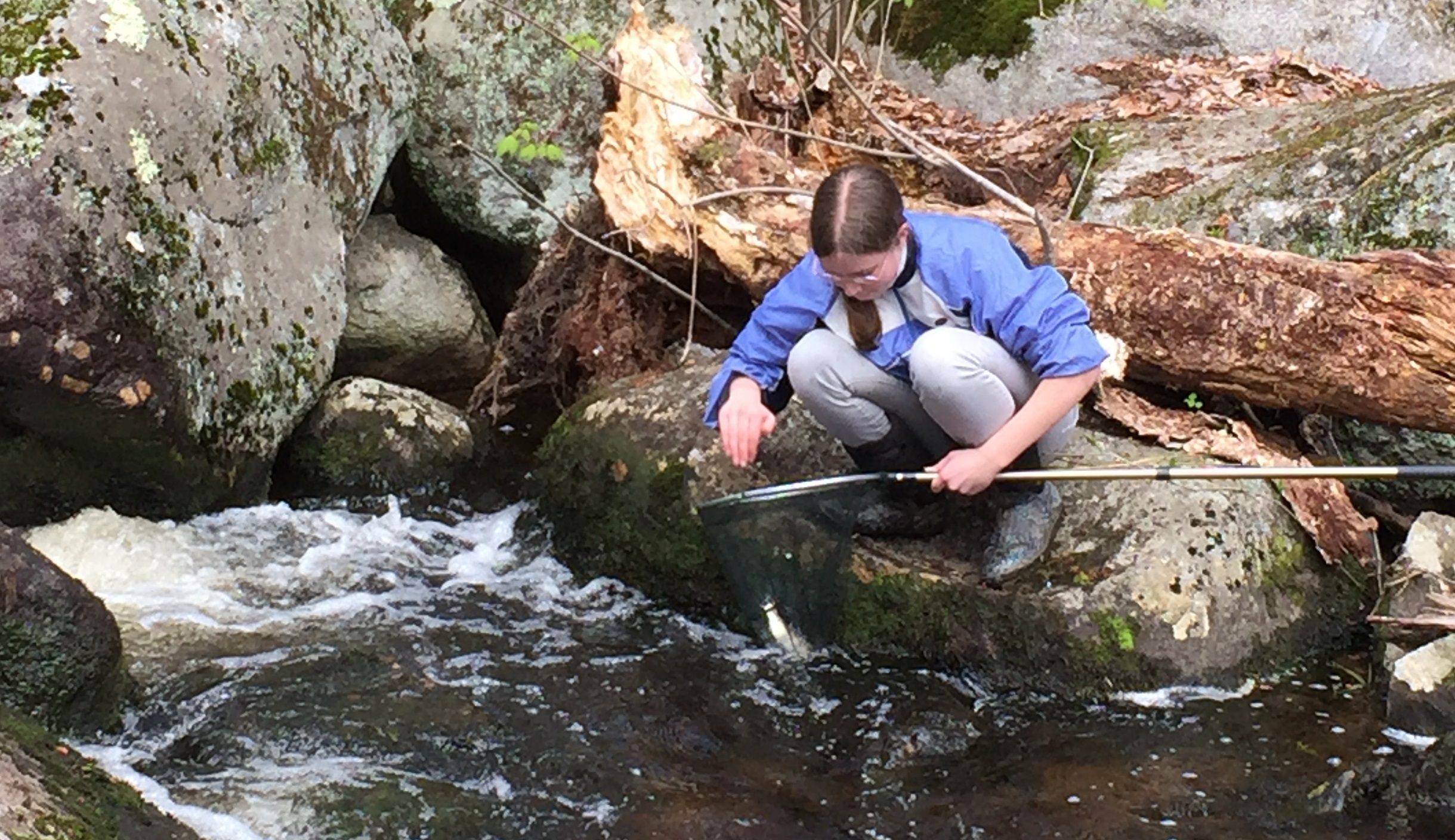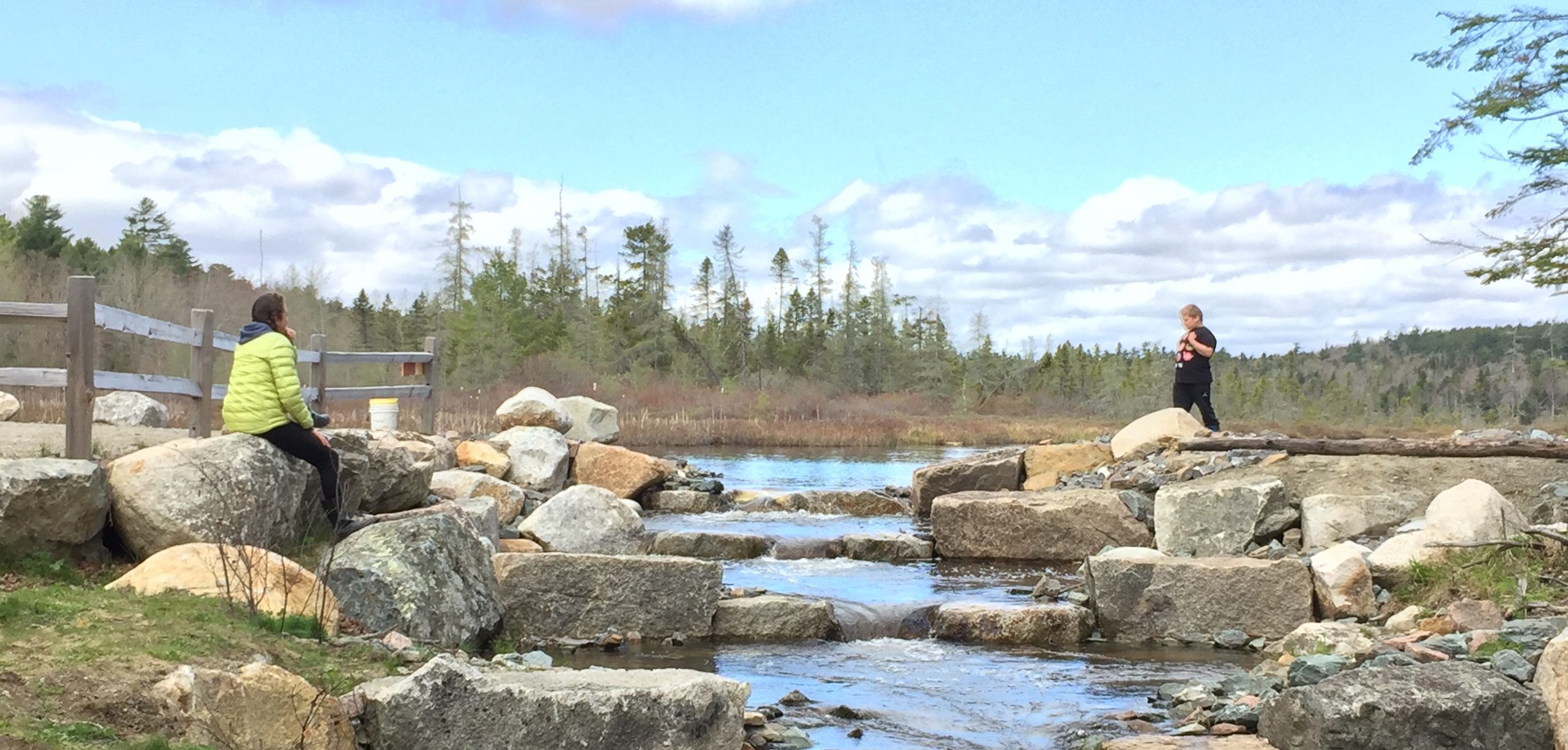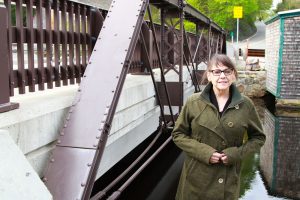On a recent sunny Saturday, a crowd of 300 people enjoyed the spectacle of alewives making their way up a tributary of the Bagaduce River to Pierce’s Pond in Penobscot, a community on the shores of Maine’s Penobscot Bay. Kids and adults alike marveled at the powerful instinct that drives the fish to work their way upstream, surmounting each rise against the flow of the stream as it tumbles down to the sea. Students from the local middle school waded in the stream for a close up look at the fish, listening as their teacher explained the life cycle of alewives, a sea run fish that lives in the ocean and spawns in freshwater. Ospreys and eagles circled overhead, keeping an eye out for an opportunity to snatch a meal from the teeming waters.
But it hasn’t always been so. The event that drew crowds to this place was a celebration, not just of a natural phenomenon, but of the fact that access for fish to Pierce’s Pond is newly restored; after much hard work, led by a local fisherman, fish can once again make their way to the pond after years of being blocked.
This river restoration story is one of several chronicled in a new report, Up and Up: River Herring in Eastern Maine. Anne Hayden, Senior Fisheries Program Manager, is the lead author; the report was prepared for the Downeast Fisheries Partnership and is posted on the Manomet website. Alewives, blueback herring, and shad are known collectively as river herring. These fish, especially the rapidly expanding numbers of juveniles that find their way to the sea each summer and fall, are an important source of forage for groundfish, such as cod and haddock. Bringing back alewives and other river herring is a key strategy for rebuilding groundfish populations.





 Back to all
Back to all



